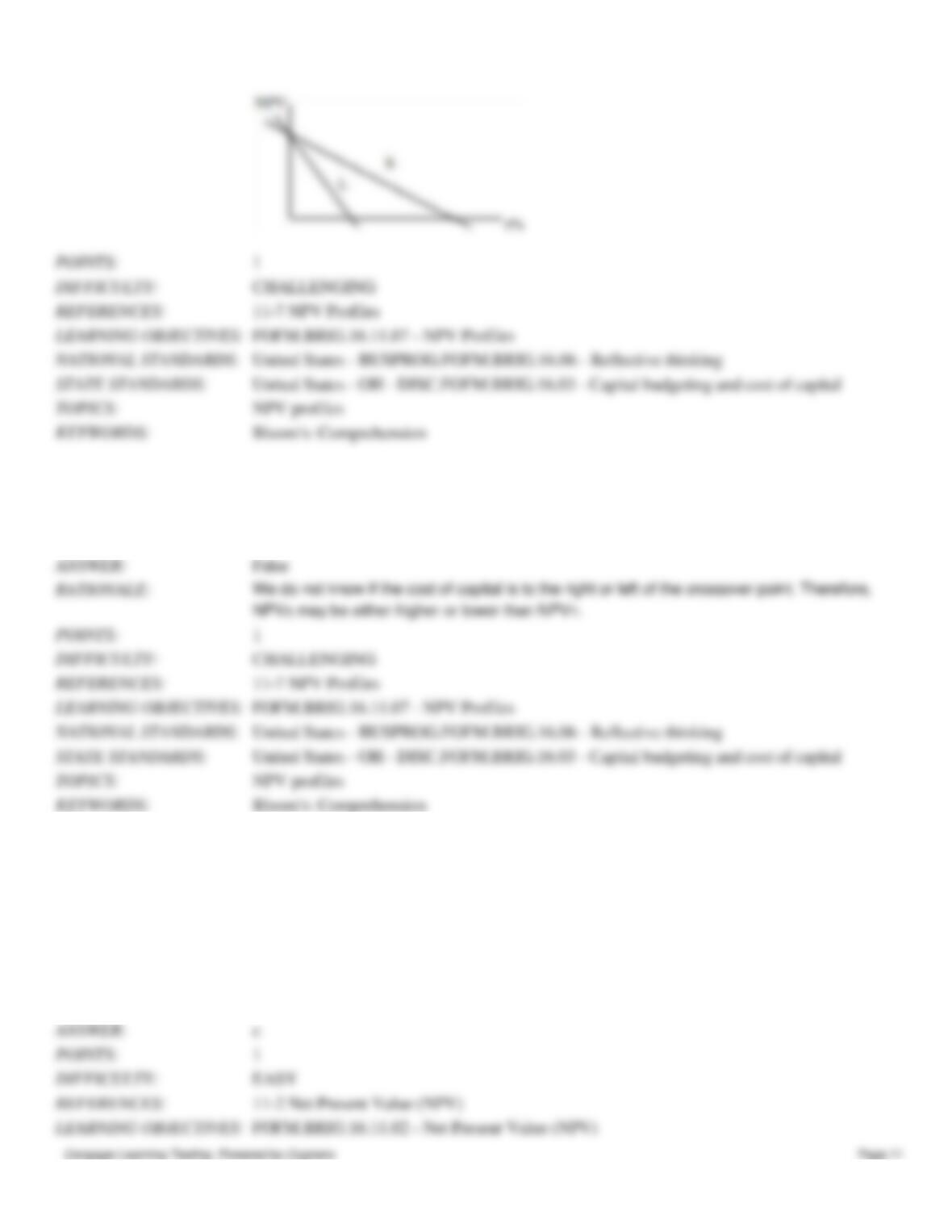CHAPTER 11—THE BASICS OF CAPITAL BUDGETING
The IRR calculation implicitly assumes that all cash flows are reinvested at the WACC.
The IRR calculation implicitly assumes that cash flows are withdrawn from the business rather than being
reinvested in the business.
If a project has normal cash flows and its IRR exceeds its WACC, then the project's NPV must be positive.
49. Assume that the economy is in a mild recession, and as a result interest rates and money costs generally are relatively
low. The WACC for two mutually exclusive projects that are being considered is 8%. Project S has an IRR of 20% while
Project L's IRR is 15%. The projects have the same NPV at the 8% current WACC. However, you believe that the
economy is about to recover, and money costs and thus your WACC will also increase. You also think that the projects
will not be funded until the WACC has increased, and their cash flows will not be affected by the change in economic
conditions. Under these conditions, which of the following statements is CORRECT?
You should reject both projects because they will both have negative NPVs under the new conditions.
You should delay a decision until you have more information on the projects, even if this means that a
competitor might come in and capture this market.
You should recommend Project L, because at the new WACC it will have the higher NPV.
You should recommend Project S, because at the new WACC it will have the higher NPV.
You should recommend Project L because it will have the higher IRR at the new WACC.
50. Assume that the economy is enjoying a strong boom, and as a result interest rates and money costs generally are
relatively high. The WACC for two mutually exclusive projects that are being considered is 12%. Project S has an IRR of
20% while Project L's IRR is 15%. The projects have the same NPV at the 12% current WACC. However, you believe
that the economy will soon fall into a mild recession, and money costs and thus your WACC will soon decline. You also
think that the projects will not be funded until the WACC has decreased, and their cash flows will not be affected by the
change in economic conditions. Under these conditions, which of the following statements is CORRECT?
You should reject both projects because they will both have negative NPVs under the new conditions.
You should delay a decision until you have more information on the projects, even if this means that a







































